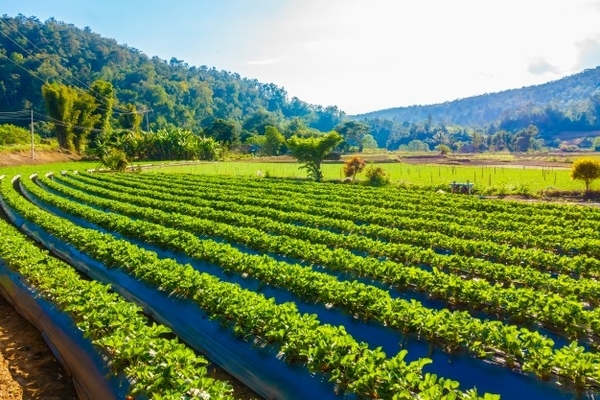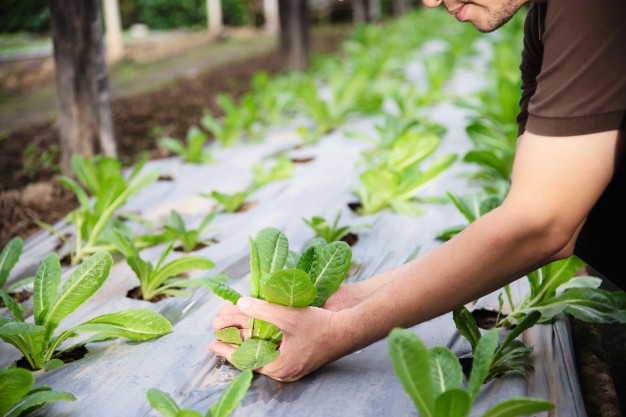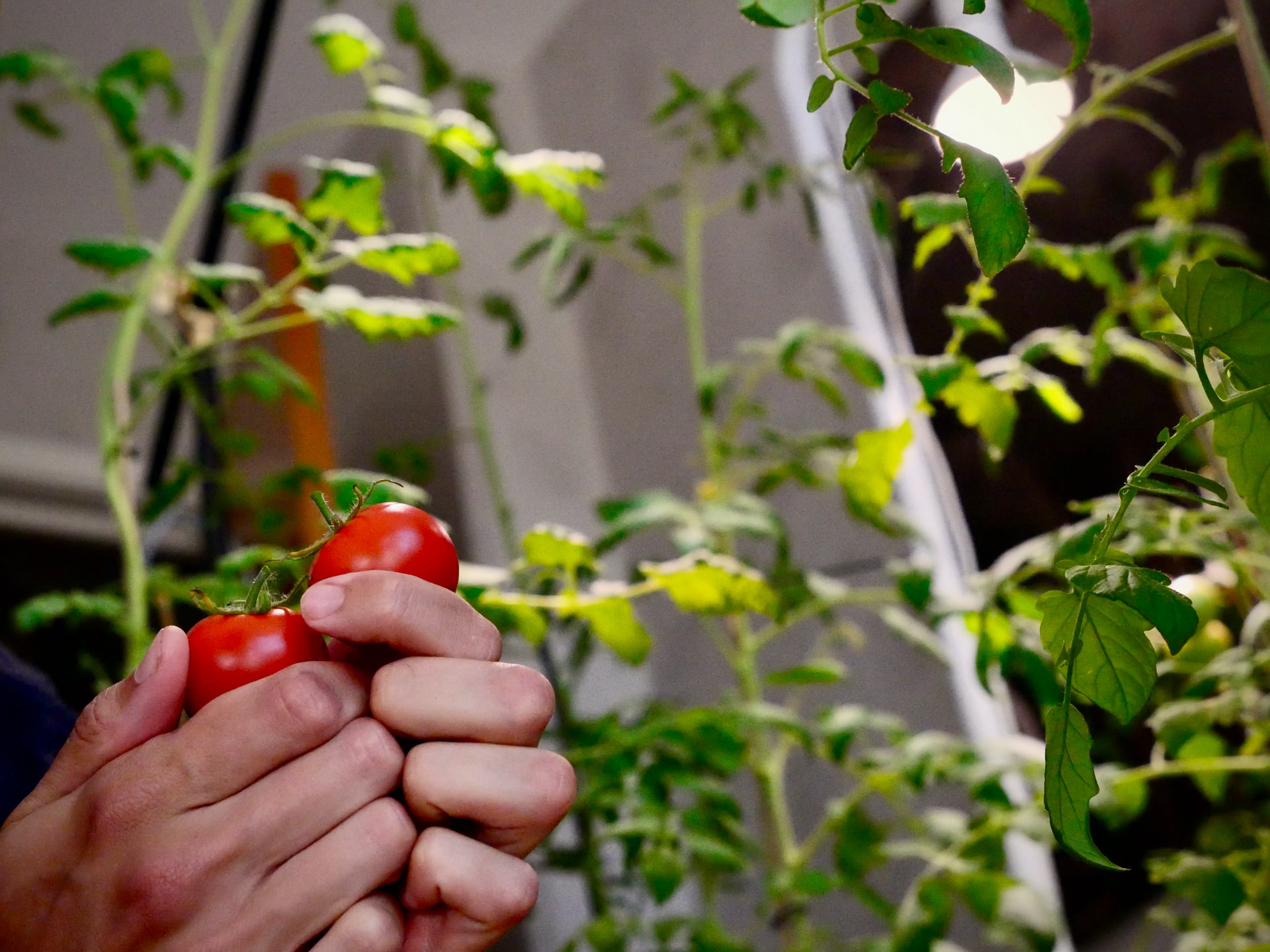
Running a farm can be a complex operation requiring lots of expensive and hard-to-maintain equipment. However, there is one item that is affordable, cost-effective, and has many different uses: the silage tarp. We’re going to discuss the various applications of silage tarps, how effective they are, and where you can purchase them. Let’s get started.
What Are Silage Tarps?
Silage tarps are large sheets of opaque polyethylene plastic with UV protection. They come in black and green colors and various sizes. Some are small, measuring 30 feet by 40 feet. Others are much larger, measuring 30 or 50 feet by 100 feet.
Image via Flaticon
How Are Silage Tarps Used?
Traditionally, farmers use them to protect hay or manure piles.
But recently, farmers are discovering that they are useful for many different applications such as extending seasons, suppressing weeds, assisting with specialty crop production, incorporating of crop residue, reducing water consumption needed for irrigation, and less need for tillage.
Let’s discuss each of these applications in a little more detail so that you can make an educated decision about buying and using this type of tarp for your farm or garden.
Extending the Seasons
When a growing season is particularly wet, it can delay when farmers work up beds or turn in cover crops. By placing silage tarps over prepped beds in the fall, you are ensuring dry, clean beds for early season plantings. No more waiting for the soil to dry out before you plant your crops!
Suppressing and Controlling Weeds
When you silage tarps over weed-infested areas, you can often get rid of weeds in about three weeks. If you have perennial weeds or weeds with underground reserves, you’ll need to leave the tarps on longer.
Some weeds can survive for months without sunlight, however. If that’s the case, you’ll need to take other measures to destroy the weeds.
Using Occultation for Soil Preparation
When you block sunlight from garden soil, it is called occultation. When you place black silage tarps on the ground, you create a warm, moist environment that starts the weed germination process.
However, because the weeds aren’t getting any sunlight, they die off. This process creates a stale weed seed bed or stale seed bank. By using occultation, you won’t have to use tillers or tractors to prepare your soil for planting.
You can use occultation either in the summer or in the winter. Place the tarp over your soil for 3 to 4 weeks in summer or up to six weeks in winter. When you’re ready to plant, all you need to do is pull up your tarps.
Producing Special Crops
When you make small incisions in the tarps and plant crops that wouldn’t normally do well in your location, you’re helping to keep roots warmer. In turn, you’re helping to establish the crops earlier in the season.
And when roots grow faster and are more abundant, they have a higher resistance to pests and have better nutrient and moisture uptake. Your yield will increase as a result.
Incorporating Crop Residues
It’s a warm and moist environment under silage tarps, which is the perfect environment for growing beneficial soil microorganisms. The microorganisms break down the trash and improve the mineralization levels in your soil.
You can also use silage tarps for passively incorporating mowed cover crops in areas that you scheduled for later season plantings.
Reducing Water Needs for Irrigation
Silage tarps offer soil protection against wind and direct sunlight, which can dry out your soil. When soil is kept moist, you won’t need to irrigate it as much. And plants that grow through silage plastic don’t need as much water throughout the season.
Reducing Tillage
When you use a tarp, you are also reducing the amount of soil disturbance and tractor passes. This means less soil erosion, better soil structure, better biodiversity, and overall healthier soil.
The Downsides Of Using Silage Tarps
Image source: Freepik
After reading all of the different benefits of using silage tarps, you probably can’t wait to start using them. But before you run out and buy a bunch, there are some drawbacks you need to consider.
Their Weight And Size
As you might have guessed, these tarps are extremely heavy. One person can move smaller ones that measure 30 feet by 40 feet.
Medium-sized tarps measuring at 30 feet by 100 feet require more than one person or a tractor to move. And the biggest ones measuring 30 feet by 300 feet need heavy equipment to move them around.
For stretching them out on a field, you’ll need at least three people for the medium rolls and possibly more for the larger ones.
Icon via Flaticon
The Size Of Your Farm
If you run a large-scale farm, it might be hard to source or manage enough tarps to make it a worthwhile endeavor. And small farms may not have the workforce needed for managing multiple larger tarps.
Icon via Flaticon
Weather Considerations
Do you have a farm where the wind is an issue? Despite the weight of the tarps, wind can still pick them up and move them. The movement of the tarps can damage your crops.
Be sure to use sandbags to keep the wind from moving the tarps and ruining your crops. If you don’t have sandbags, use old tires to weigh down the tarps.
And if you live in an area with a lot of precipitation, keep in mind that the rain will run off the tarps. It has to go somewhere, so be sure to check other areas for increased erosion.
If you put tarps over raised beds, you may need to pump the water out of the aisles in between the raised beds. Or, if you can wait, you can let it evaporate.
Icon via Flaticon
Pests
Slugs and voles love living under tarps, so if you want to discourage them from setting up house, try pulling up the tarps for a week or two. The weeds won’t have much of a chance to grow, and natural predators such as snakes and coyotes get an opportunity to get their meals in.
Icon via Flaticon
Sourcing And Delivery Of Tarps
Image via Freepik
Before you run out and buy a bunch of brand new tarps from your feed store, you should check out used tarps for sale in your area.
Also, keep in mind that the people who first used the tarps didn’t consider how the next owners would use them after they no longer needed the tarps. Don’t be surprised if the tarps have small holes and frays. And the previous owners might have rolled them or folded them in odd ways.
Sometimes, used tarps have a pungent smell to them from the fermentation of any grain or plant material that may have lodged itself in the tarp. The odor might attract rodents, so be sure to hose them down if they smell.
Depending on the size of your order, receiving them can be quite an ordeal. You’ll have to have a plan to get the tarps off the delivery vehicle including equipment such as tractors with bucket forks, sturdy ropes, and plenty of people. It can take hours, even with the best-laid plans.
Words Of Wisdom For Farmers
Image via Freepik
As with any new venture, it’s a good idea to understand what you’re trying to achieve by using silage tarps.
Lay Out Your Goals
You should know your goals and ask yourself why you want to use tarps. Do you want to keep your beds dry? Is weed control your main goal? Sometimes your goals can conflict with one another, so be sure to understand your priorities to determine when to put down tarps and remove them.
Understand That Timing Is Everything
You will want to time putting down your tarps and removing them well. Consider all of the variables, including the time it will take, how much labor you have on hand, weather, and equipment.
Applications For Amateur Gardeners
While silage tarps are generally used most by farmers, gardeners have discovered how useful they are for improving the quality of their soil for all of the same reasons mentioned previously.
You might also enjoy the weed control provided by silage tarps. You won’t need to dread kneeling in your garden for hours on end pulling weeds! You’ll also be able to reduce the amount of weed killer you use, perhaps foregoing it altogether.
The only difference is that you won’t have to worry as much about needing a big labor force to place and move your tarps, and you can get away with only buying one or two small tarps, depending on the size of your garden.
Conclusion
In this guide, we covered what silage tarps are and their many benefits to farmers and gardeners alike. We also discussed some things to take into consideration before purchasing and using these tarps, such as your environment, the amount of labor required, and what to expect when buying used tarps as a cost-saving measure.
We hope that you’ll use this guide to determine if silage tarps are right for you and your needs.
Image via Flaticon
Featured Image: Freepik












